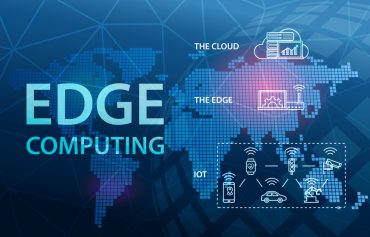
Open-source platforms and standards have opened new IoT business models in smart grids, energy management, and retail.
Open-source technology is playing a key role in achieving business results in IoT projects across a broad range of industries.
The rise of open source platforms “resonates and culminates in transitioning enterprises toward a services-based model,” said Chris Gray, director of IoT for Red Hat, during the company’s IoT Webinar Series.
“Today, you don’t have to look any farther than a company like Uber to see how technology and connected devices are really helping to transform businesses from a static product to a true service-oriented economy. Leveraging open source provides organizations the level of innovation, integration, and interoperability required to make that transformation a reality.”
The webcast, “Open IoT Technology in Action: Realizing the Power of Collaboration,” also features Franco Potepan, director of product management for Eurotech and Eric Shea, partner with Kurt Salmon Digital, a division of Accenture.
The webcast notes successful examples of open source-driven IoT efforts seen in smart grid, energy management and retail. The availability of open-source platforms with a wide range of functionality is helping businesses to quickly and cost-effectively extend their infrastructures to support IoT requirements.
“Open source is playing a huge part in the application development space now through containerization and microservice-based delivery,” Gray points out. “All these things that are being driven by the open source community enable the prolific broad development we’re seeing in IoT today.”
Open-source IoT projects: examples
Smart grid
A major electric utility in France sought to decrease peak electricity usage that caused huge spikes in electric demand, which increased costs which passed on to customers. The utility also needed to better manage its carbon emissions to meet regulatory requirements. The company employed Red Hat and JBoss technology to build an intelligent architecture and intelligent network of smart meters, starting with 300,000 units, and eventually scaling to 35 million.
The connected meters are providing the utility with greater insights into their customers using their service, and enabling them to better manage spikes in usage. The Red Hat-based IoT platform supports a network of 700,000 gateway controllers to analyze the data streaming in from the customer devices, allowing the utility to take real-time actions to manage its capacity.
Energy management
At the receiving end of the electrical grid are countless devices in homes and offices that need regular, ongoing maintenance and monitoring. Potepan describes how Ariston Thermo Group, a producer of heating systems and related products, significantly expanded its service offerings through IoT, enabling end-users to remotely control their devices, such as water heaters, as well as providing remote diagnostics. Deployment of an IoT platform on Red Hat cloud-enabled services provided Ariston data that enhanced the knowledge and operational capabilities of its R&D, service and marketing departments. The platform also enabled the company to significantly cut development time as well as time to market. Potepan’s company, Eurotech, has also partnered with Red Hat in the open-source Eclipse-based Kura project, which provides IoT gateways, as well as the Eclipse-based Kapua project, a modular IoT cloud platform to manage and integrate devices and their data.
Retail
For retailers, the rise of digital engagement has been nothing short of an earthquake for many organizations. The webcast explores the challenges today’s retailers face – from online competition to shifts in consumer behavior – and how IoT platforms are helping retailers to move ahead of their competition. Shea explains that while online shopping has all the attention, the vast majority of transactions still take place through brick-and-mortar stores, which is now augmented by mobile. This is where retailers need more information and intelligence, which provides two levels of benefits – providing more immersive and integrated experiences for shoppers, and providing more actionable data for retail decision makers.
IoT sensors in stores provide data on shoppers’ movements throughout stores, sale items to which they are attracted, and interactions with store personnel. At the back end, devices in stores such as displays can be better aligned with online information, potentially providing customized experiences on retail floors similar to ecommerce sites, versus the more static signage that exists today.
With mobile apps supported by IoT data, retailers also may provide augmented reality experiences, such as “smart mannequins” displayed through smartphones that will enable customers to better visualize the look of clothing lines, or how furniture will look within homes.
The presence of RFID-enabled devices, beacons, and mobile devices also provides retail decision-makers with data on the types of customers who are drawn to their stores. In one example cited in the webcast, a retailer leveraged Red Hat JMQ technology and JBoss Business Rules Management System to ease provisioning of in-store customer data and purchases to develop a better picture of customer shopping preferences. The retailer was also able to develop a “smart fitting room” through RFID sensors and antennas to provide real-time data on what customers were trying on, and help them make alternative selections in real time.
Click here to view this webcast in its entirety.





























